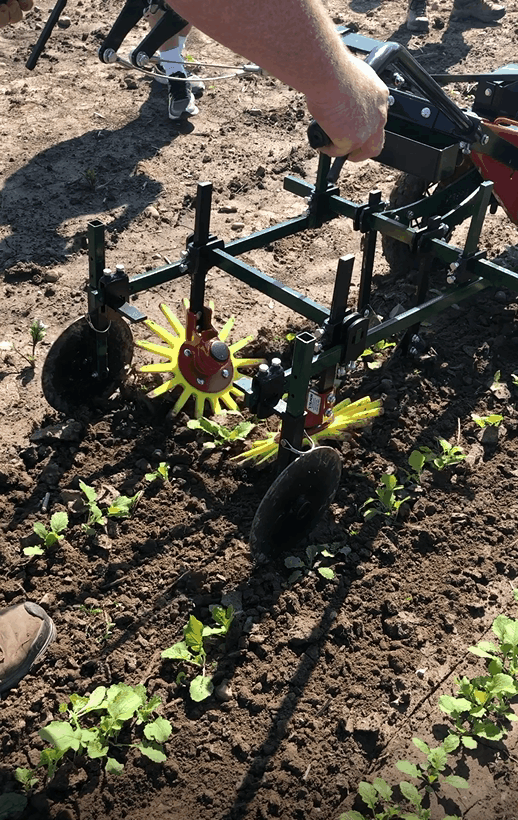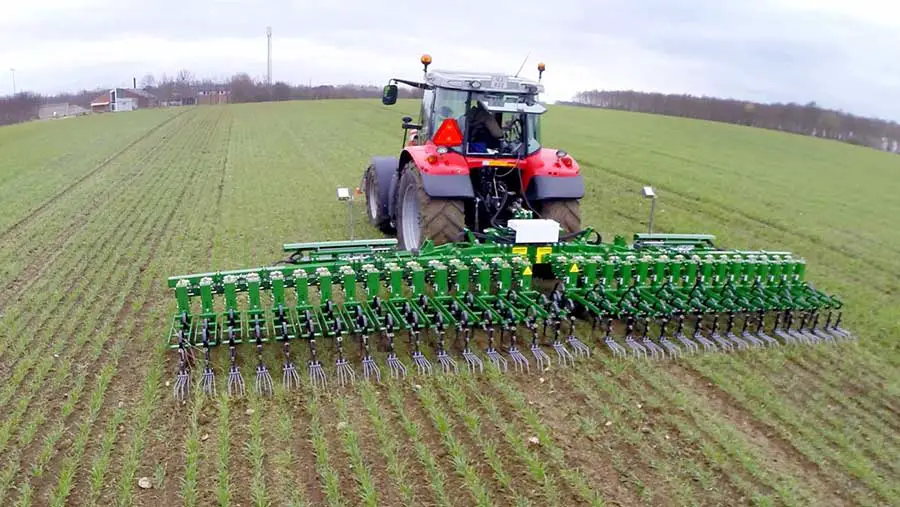This post may contain affiliate links which means I may receive a commission for purchases made through links. Learn more on my Private Policy page.
Have you ever wondered about the different types of weeders and how they are used? If so, you’re in the right place! In this article, we will explore the various types of weeders available and discuss their uses. Whether you’re a seasoned gardener or a newbie in the world of weeds, this article will provide you with all the information you need to keep your garden looking pristine. So grab your gardening gloves and let’s dive into the world of weeders!
Types of Weeders
When it comes to keeping your garden free from pesky weeds, there are a variety of tools available to help you get the job done. From handheld weeders to robotic weeders, each type has its own unique features and benefits. Let’s take a closer look at the different types of weeders and how they can be used to maintain a weed-free garden.

This image is property of 1.bp.blogspot.com.
Handheld Weeders
Handheld weeders are a popular choice among gardeners due to their convenience and ease of use. These small, lightweight tools can be easily maneuvered and are perfect for removing weeds in tight spaces or between plants. They typically have a sharp, pointed end that can be used to dig out weeds from the root, ensuring they won’t grow back.
To use a handheld weeder, simply position the tool at the base of the weed, press it into the soil, and then use your hand to pull the weed out. Some popular handheld weeders include the CobraHead Weeder & Cultivator and the Fiskars Softouch Weeder.
Stand-up Weeders
If you’re looking for a more comfortable option, stand-up weeders are worth considering. These tools feature a long handle that allows you to remove weeds without bending down or kneeling. Stand-up weeders typically have a claw-like mechanism at the end that grabs hold of the weed, making it easy to pull it out from the root.
To use a stand-up weeder, simply position the claw-like end around the weed, press it into the soil, and then push down on the handle to grab hold of the weed. Once you have a firm grip, just pull up to remove the weed. Popular stand-up weeders include the Fiskars 3-Claw Garden Weeder and the Grampa’s Weeder.
Long-handled Weeders
Similar to stand-up weeders, long-handled weeders allow you to weed your garden without straining your back. These tools have an elongated handle that provides extra reach, making it easier to remove weeds in larger areas or hard-to-reach spots. Long-handled weeders often have a curved or hooked end that can be used to dig out weeds from the root.
To use a long-handled weeder, simply position the hooked end around the weed, press it into the soil, and then twist the handle to loosen the weed. Once the weed is loose, use the weeder to lift it out of the ground. Popular long-handled weeders include the Fiskars Deluxe Stand-up Weeder and the Worth Garden Stand-Up Weeder.
Scuffle Hoes
Scuffle hoes, also known as stirrup hoes or action hoes, are another type of weeder commonly used in larger gardens or agricultural fields. These hoes feature a double-edged blade that resembles a stirrup, hence the name. When pushed or pulled along the ground, the blade slices through the weeds, effectively removing them from the soil.
To use a scuffle hoe, simply push or pull it in a sweeping motion just below the surface of the soil. The blade will cut through the weeds, severing their roots and preventing regrowth. This method is particularly effective for larger areas with dense weed populations. Some popular scuffle hoes include the Flexrake Hula-Ho Garden Hoe and the True Temper Action Hoe.

This image is property of www.topcropmanager.com.
Pivot Weeders
Pivot weeders, also known as winged weeders or oscillating hoe weeders, are designed to quickly and efficiently remove weeds from the soil with minimal effort. These tools have a pivoting action, allowing the blade to move back and forth as you push or pull it through the ground. This motion slices through the weeds and loosens them from the soil.
To use a pivot weeder, simply position the blade just below the soil surface, and then push or pull it in a back and forth motion. The oscillating blade will efficiently cut through the weeds, making it easy to remove them from your garden. Popular pivot weeders include the Winged Weeder Junior and the Yard Butler Terra Weeder.
Rotary Weeders
If you’re dealing with larger or more stubborn weeds, rotary weeders can be a great option. These tools feature a rotary blade or wheel that spins rapidly, cutting through the weeds with precision. Rotary weeders are often used in agricultural settings or large-scale weed control operations.
To use a rotary weeder, simply walk behind the tool and push it along the ground. The spinning blade will chop through the weeds, effectively removing them from the soil. Rotary weeders are particularly effective for weeds that have thick stems or are densely packed. Popular rotary weeders include the WOLF-Garten Double Hoe and the Stihl KW-KM KombiSystem.

This image is property of 1.bp.blogspot.com.
Flame Weeders
Flame weeders, as the name suggests, use heat to eliminate weeds from your garden. These tools typically have a propane tank and a burner that produces a flame. When the flame comes into contact with the weeds, it quickly heats them up and causes them to wither and die. Flame weeders are particularly useful for clearing out areas with large weed populations.
To use a flame weeder, simply position the flame over the weeds and pass it over the foliage for a few seconds. The heat will destroy the weeds, leaving them wilted and eventually dead. When using a flame weeder, it’s essential to exercise caution and follow safety guidelines to prevent accidental fires. Popular flame weeders include the Red Dragon VT 2-23 C Weed Dragon and the Bernzomatic Torch Kit.
Chemical Weeders
Chemical weeders, also known as herbicides, are a type of weeder that relies on the use of chemicals to kill weeds. These products come in various forms, including sprays, granules, and concentrates. Chemical weeders are often used in large-scale weed control operations or for persistent weed problems.
To use a chemical weeder, simply apply the product according to the instructions on the packaging. It’s crucial to follow the dosage recommendations and safety precautions to ensure effective and safe weed control. Chemical weeders can be selective, targeting specific types of weeds, or non-selective, killing any vegetation they come into contact with. Popular chemical weeders include Roundup Weed & Grass Killer and Preen Garden Weed Preventer.

This image is property of 1.bp.blogspot.com.
Electric Weeders
Electric weeders, also known as electric weed trimmers or string trimmers, are powered by electricity and are a popular choice for maintaining small to medium-sized gardens. These tools consist of a rotating nylon string or blade that cuts through weeds with precision. Electric weeders are lightweight, easy to use, and produce less noise than their gas-powered counterparts.
To use an electric weeder, simply plug it into an electrical outlet, press the power button, and guide the string or blade along the base of the weeds. The rotating motion will efficiently cut through the weeds, keeping your garden neat and tidy. Electric weeders are often battery-powered for added convenience. Popular electric weeders include the BLACK+DECKER String Trimmer and the Worx GT Revolution.
Robot Weeders
Robot weeders are the latest innovation in weed control, offering a hands-free approach to maintaining a weed-free garden. These autonomous machines use advanced technology, such as cameras and sensors, to identify and remove weeds without any human intervention. Robot weeders are particularly useful for large gardens or commercial farming operations.
To use a robot weeder, simply set up the machine in your garden and program it to operate as desired. The robot will roam your garden, scanning for weeds, and removing them as it goes. Some robot weeders even have the ability to distinguish between plants and weeds, ensuring that your desirable plants aren’t accidentally removed. Popular robot weeders include the Tertill Garden Weeding Robot and the DeepRoots Weed SLAYER.
In conclusion, there are various types of weeders available to suit every gardener’s needs and preferences. Whether you prefer the convenience of handheld weeders, the comfort of stand-up weeders, or the efficiency of robotic weeders, there’s a tool out there that can help you keep your garden free from weeds. Remember to choose the right weeder for the task at hand and always follow safety guidelines to ensure a successful and enjoyable gardening experience. Happy weeding!

This post may contain affiliate links which means I may receive a commission for purchases made through links. Learn more on my Private Policy page.

